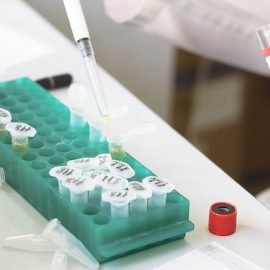

This article is an excerpt from the Shortform book guide to "The Selfish Gene" by Richard Dawkins. Shortform has the world's best summaries and analyses of books you should be reading.
Like this article? Sign up for a free trial here .
What is genetic replication? How is replication influenced by sexual reproduction?
In The Selfish Gene, Richard Dawkins argues that genetic replication is the main purpose of life and can explain all behaviors in nature. However, sexual reproduction as a means of passing on DNA calls that theory into question.
Keep reading to understand genetic replication and how sexual reproduction is a paradox.
The “Paradox” of Sexual Reproduction for Genetic Replication
If genes truly exist to replicate themselves, it would seem like sexual reproduction isn’t the best way to do it. Sexual reproduction takes a great deal of time and resources and, most significantly, only allows each parent to pass on half of their genes. This apparent paradox leads many people away from genetic replication and back to the group-focused idea of evolution, wherein the good of the species is the ultimate goal.
However, if there are individual genes that do well in an environment of sexual reproduction (such as genes for qualities that help attract mates), that in itself could explain why sex exists and resolve the paradox. Therefore, from the viewpoint of a selfish gene, sexual reproduction may make sense after all.
Furthermore, the diversity gained from sexual reproduction is favorable enough that it has become prominent in nature. Remember the primordial atoms, randomly bumping into each other and combining until one molecule happened to be more successful than the others? This demonstrates that the more diversity there is, the more chances there are that something will succeed.
During sexual reproduction, chromosomes (collections of genes) can swap parts with each other to give rise to new combinations of genes, different from anything found in the parent. This is called crossing over. This process means that a sperm or egg cell contains a mosaic of that creature’s parents’ genes, rather than just direct copies of their chromosomes. Crossing over is a key method of increasing diversity in a population.
The Impact of Mutations on Genetic Replication
The other main mechanism for diversity is mutation, which can happen in various ways. Point mutation is when a single nucleotide is swapped for another due to a replication error. Inversion is when a piece of a gene detaches, becomes completely flipped around, and reattaches backwards. Sometimes, though rarely, it can even reattach in a completely different place.
Many mutations have no effect or are harmless, but some are devastating. For example, cystic fibrosis in humans is the result of a mutation. Sometimes, by pure chance, a mutation will be beneficial. For example, perhaps a muscle gets changed in a way that makes it slightly stronger or more efficient. Those mutations tend to pass themselves on and become part of the gene pool.
Smaller genes have fewer nucleotides, and therefore fewer chances to mutate. Since genes that mutate are no longer the same genes, it could be said that smaller genes have an evolutionary advantage over large ones—that is, they will survive through more generations of genetic replication.
The Complications of Modern Genetics
Sexual reproduction is complicated for many reasons, not least because it, too, seems to contradict the selfish gene theory.
Some people believe that a genetic replication view of evolution is misguided because it’s the individuals—and all the thousands of genes they contain—that live or die, not the genes themselves. These people argue that biology should be examined at the individual level, not the gene level.
It’s true that, unlike primordial replicators, genes no longer succeed or fail on their own. An organism has thousands of genes contributing to its genetic makeup. Those genes overlap and interact in such complex ways that it would seem more reasonable to refer to them as a collective, like a gene network or something along those lines—in other words, an individual organism.
In fact, that would make sense for everything except sexual reproduction, which gives rise to distinctly different organisms. However, while sexual reproduction rearranges genes, it doesn’t normally change them (there are a couple of exceptions to this, which we’ll get to shortly). Therefore, it’s an effective way for individual genes to survive through multiple generations.
Further complicating the process, at least in humans, is the fact that we have two versions of each gene. Human genes are arranged into 23 chromosomes, but we have two copies of each chromosome—one from each parent (except for X and Y chromosomes in males).
While each gene from each parent codes for the same type of trait, like eye color, the trait itself may be different, such as having brown vs. blue eyes. Different versions of genes that code for the same type of trait are called alleles. Conflicting alleles may result in one being dominant over the other, or in both being expressed to some extent in the organism.
All of these apparent complications can be resolved with a simple comparison: Just as a successful sports team needs to be made of strong players, a successful individual needs to be made of strong genes: genes that enable that creature to survive and reproduce.

———End of Preview———
Like what you just read? Read the rest of the world's best book summary and analysis of Richard Dawkins's "The Selfish Gene" at Shortform .
Here's what you'll find in our full The Selfish Gene summary :
- Why organisms don't matter, only genes do
- How all life forms begin with a replicating molecule
- How species need to balance aggression and pacifism to survive






